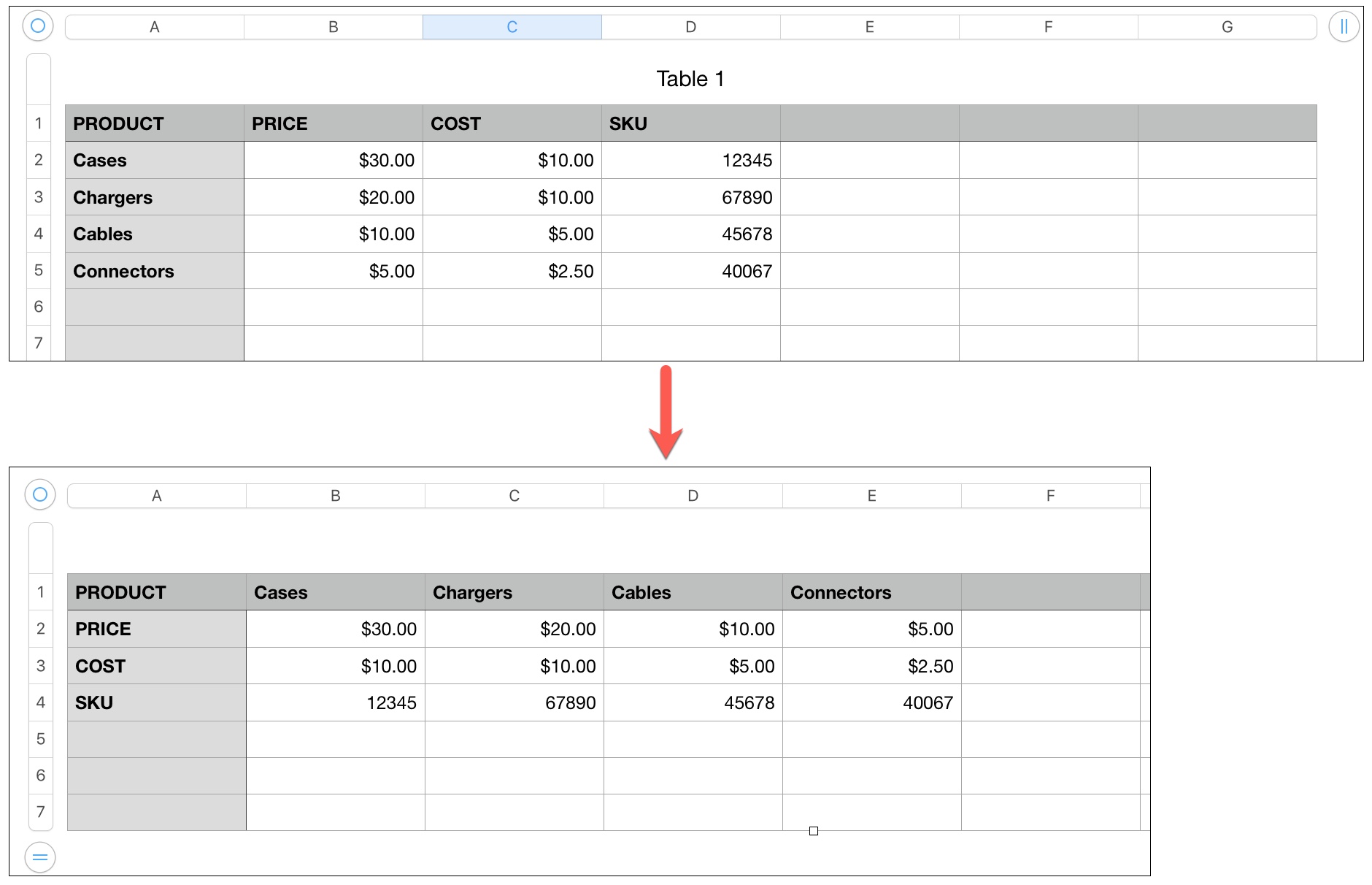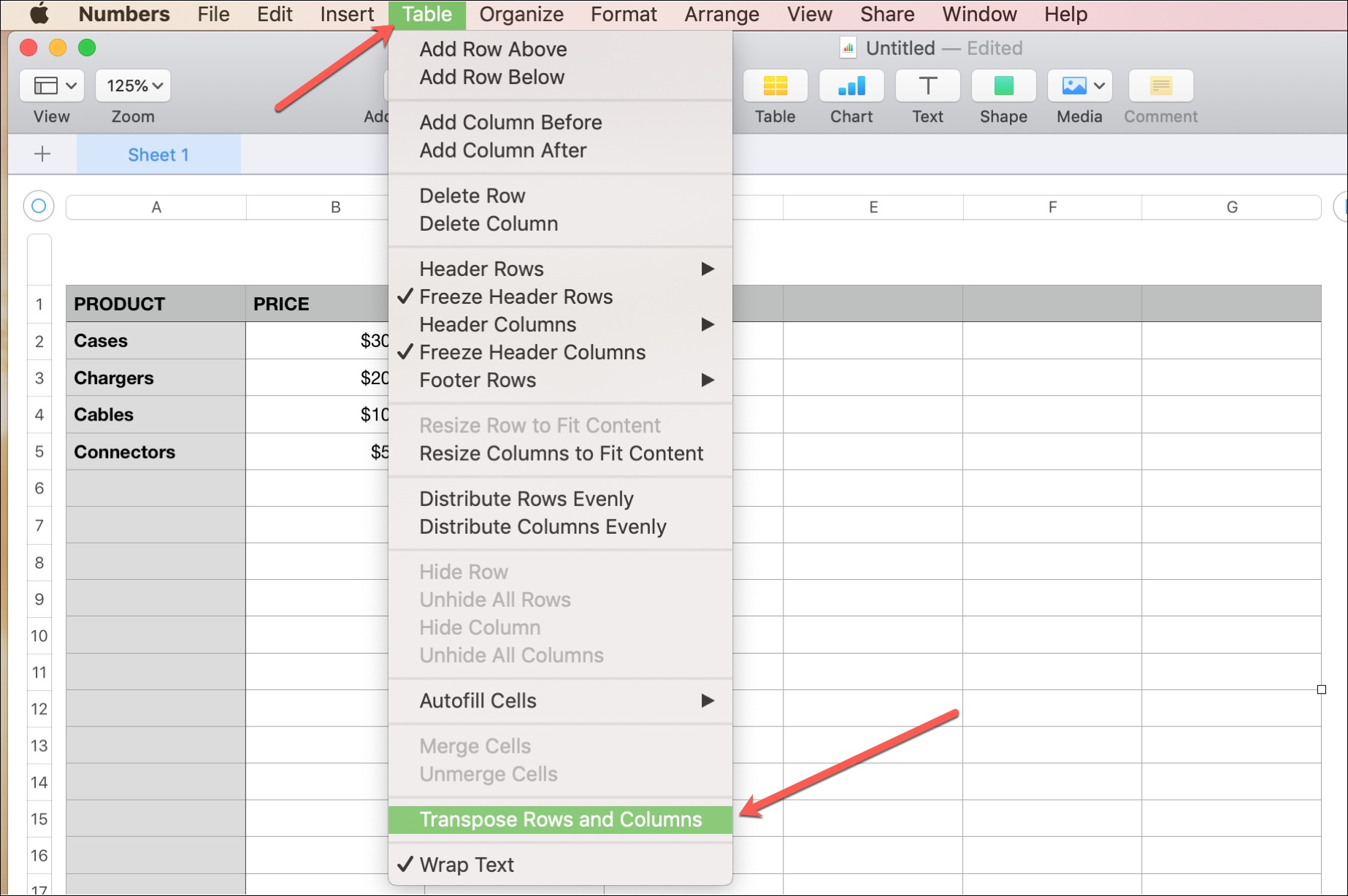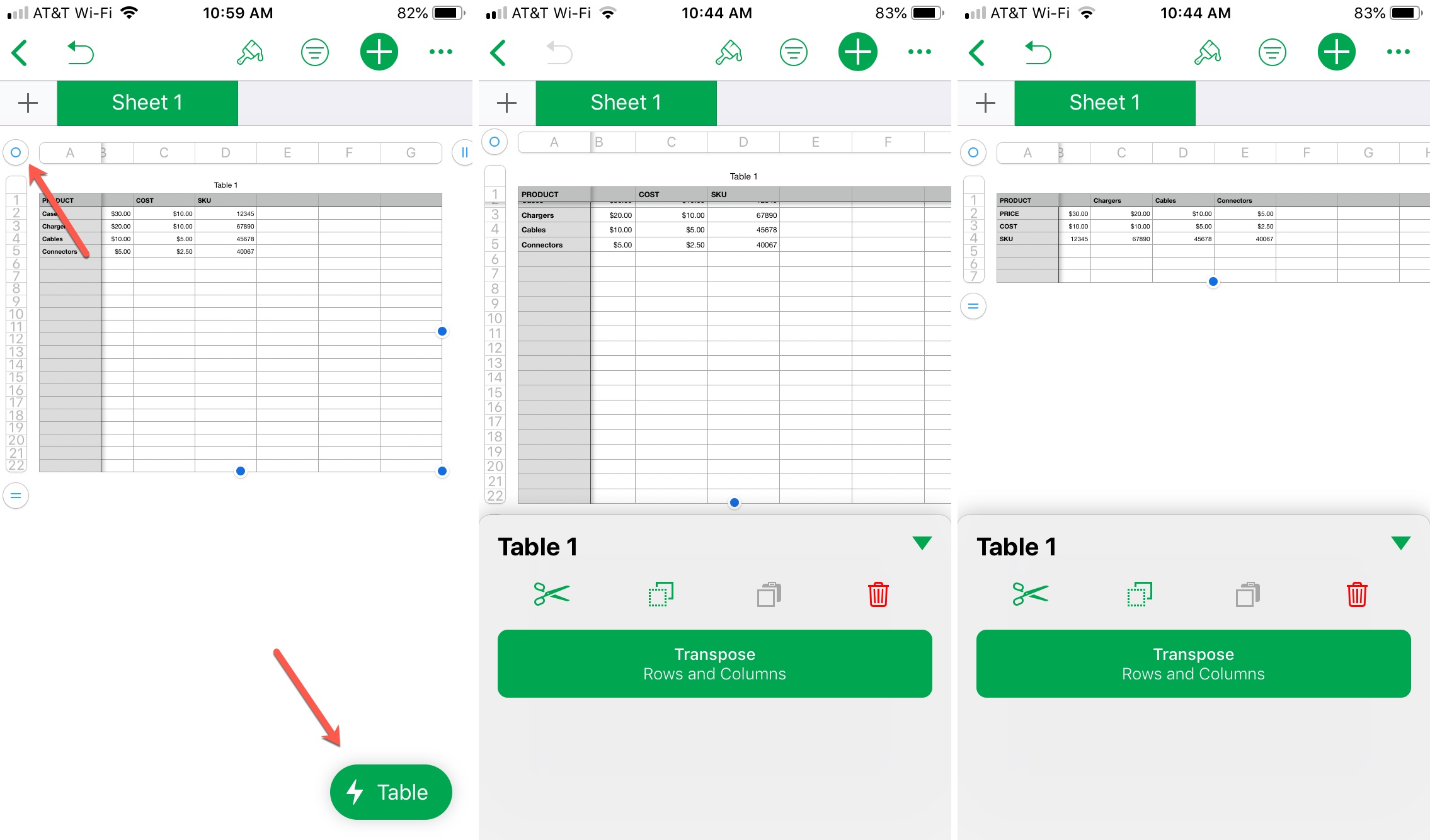Learn how to quickly convert rows to columns or vice versa in your spreadsheet in the Apple Numbers app on iOS and macOS if you want to format the table differently.
Numbers has tons of templates to get you started, hundreds of functions you can use, methods for collaboration, and so much more. So, when you are working with your spreadsheet data, you may decide part of the way through that you want to format that sheet differently. You might want to convert your rows to columns or vice versa.
Back in the day, this used to be a tedious task of sorts because you had to insert a formula. But you no longer have to do that, and it’s even easier than the method in Microsoft Excel. Here’s how to transpose rows and columns in Numbers with just a couple of clicks.

On Mac
- Pop open the Numbers app on your Mac and open the spreadsheet you want to change.
- Select the table, as the transpose tool will not be clickable unless your table is selected by clicking on it.
- Click Table from your menu bar and select Transpose Rows and Columns.

Your spreadsheet will automatically update, reflecting this change.
On iPhone and iPad
- Open the Numbers app on your iPhone or iPad, access the spreadsheet you want to change, and tap the Edit button.
- Then, like on Mac, select the table by tapping it. Next, tap the circle on the upper left corner of the table.
- The Table actions button will display at the bottom in green. Tap it and select Transpose Rows and Columns.

Reverting your changes
If you decide to revert the transposition on either Mac or iOS, simply follow the same steps to access and select the “Transpose Rows and Columns” option. Your rows and columns will return to their original positions.
Things to keep in mind
- Table styling, such as colors, highlights, and cell outlines, should retain their style when transposing.
- Formulas and functions should remain after transposing, and you’ll receive a warning if there is an issue.
- Chart references should remain the same after transposing.
- If you have merged cells, they should transpose as any other cell unless they are a row header. So, be cautious that these may unmerge after transposing.
- Rules you have created for sorting or filtering will not apply after transposing.
For more information on these conditions or to find answers to questions, visit the Apple Support page on this topic.
Also, check out: